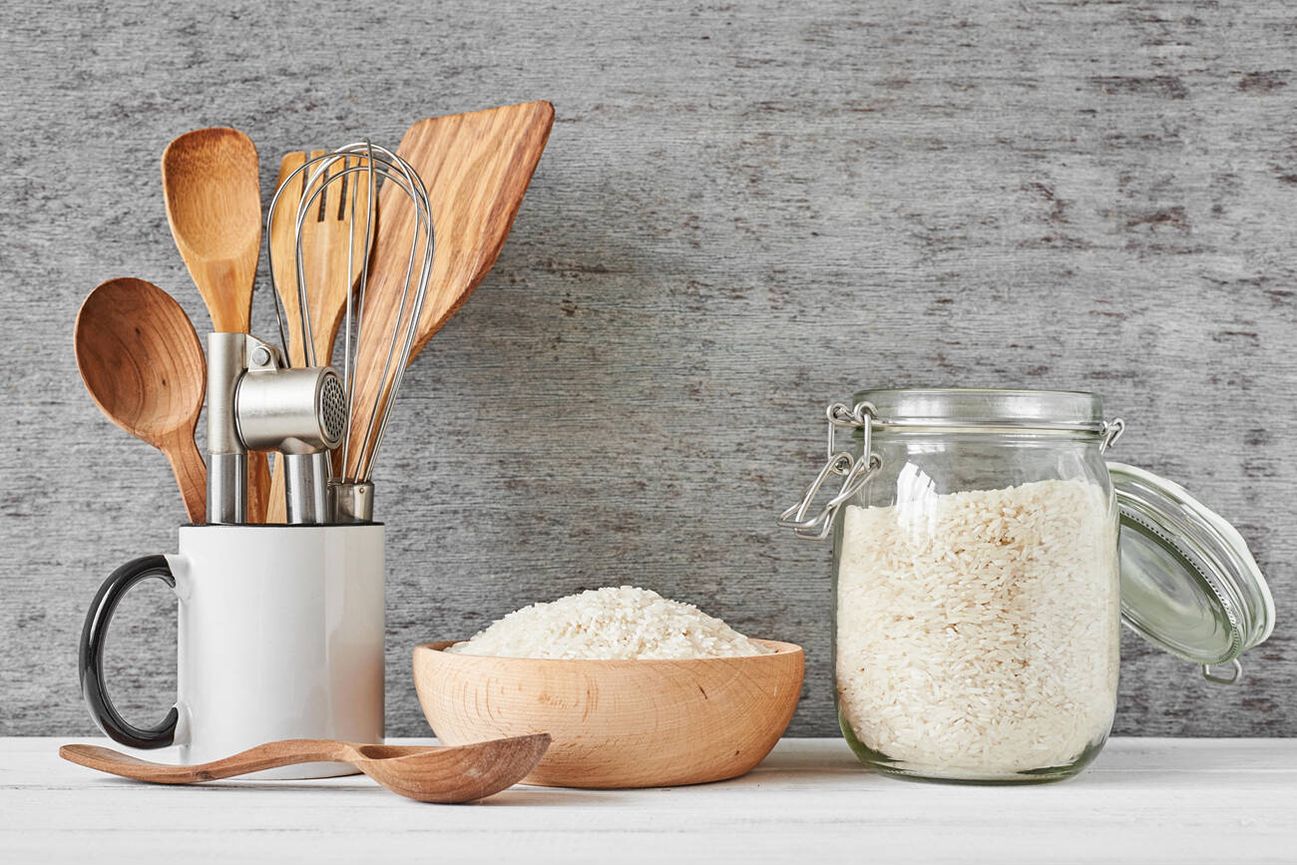
Roll out the Barrel—Fermentation in Wooden Vats is the Perfect Recipe for Truly Characterful Soy Sauce
When entrepreneur Mantaro Takahashi started out in business, he was very much your standard salaryman, travelling all around Japan to sell precision instruments to clients. Although Takahashi only held this job for three brief years, it was an experience that determined the subsequent course of his life. Why? Because the more he travelled, the more interested he became in Japan’s traditional, local industries—particularly artisanal soy sauce manufacturing.

Mantaro Takahashi, founder and director of Shokunin Shoyu in his Maebashi store
At the age of 26, Takahashi quit the device company to set up Shokunin Shoyu, a select shop specializing in the very best of Japan’s artisanal soy sauces. A couple of key insights underpinned the logic of his venture. First, he saw that soy sauce was so much part and parcel of Japanese daily life, that few people were making conscious choices about which specific soy sauce to use. Second, most people saw soy sauce as a monolithic entity, when in fact it is a complex world unto itself, with multiple varieties and producers. Takahashi knew that if he could persuade people to explore this world, he could create a new market.
There are six basic varieties of soy sauce, ranging from shiro (“white”), usukuchi (“light”), amakuchi (“sweet”) and koikuchi (“full-flavored”) through to saishikomi (“double-fermented”) and tamari (“liquid run off”). They cover the gamut from pale, salty and with little umami at one extreme to dark, less salty and umami-rich at the other. Shiro and usukuchi tend to work best with lighter, more elegant dishes such as tofu, omelet or white fish, while saishikomi and tamari go well with things like red sashimi and steak.

Clockwise from 9 o’clock: Koikuchi, Shiro, Saishikomi, Amakuchi, Tamari, Usukuchi
In addition, different regions favor different varieties. “In the east of Japan, koikuchi is the standard type, but in the west, people like both koikuchi and usukuchi. In the central region, they have koikuchi, while older folks like shiro and tamari. Over by the Sea of Japan, the preference is for the sweet amakuchi soy sauce,” Takahashi explains.
Currently there are around 1,100 manufacturers producing soy sauce in Japan. (That’s down from 1,600 in 2007, a 31% fall!) All these soy sauces taste different depending not just on the variety, but on factors including location and climate and the material of the fermentation vessel (wood, metal or plastic).
Japan’s craft-beer boom had convinced Takahashi that consumer tastes were becoming more open to precisely this sort of complexity. “With beer, consumers wanted something distinctive—beers with a character unique to a specific area and brewer,” he says. The goal of Shokunin Shoyu was to import this “craft model” into the soy sauce world and connect increasingly adventurous consumers with local traditional manufacturers.
Takahashi started out by visiting 400 soy sauce makers all over Japan. His proposition was straightforward. He would sell their soy sauce in cute 100ml bottles to a nationwide audience in return for access to their product. The merit of small bottles is that they enable consumers to sample different brands of soy sauce without committing to buying a big bottle of something they have never tried before.

All the soy sauce at Shokunin Shoyu is sold in 100ml bottles.
Takahashi now sells 120 varieties of soy sauce from all over Japan in his flagship store in Maebashi, Gunma (about 75 minutes by train from Tokyo); in Matsuya department store, Ginza, Tokyo; and in his online store. A variety of fermentation vessels—wooden vats, metal tanks or plastic tanks—are used to make it. Of these three, kioke wooden vats represent the most authentic and traditional approach of all. Approximately half of the soy-sauce varieties Takahashi distributes are made this way.

Kioke fermentation is a traditional production method with over 400 years of history.
“Fifty years ago, when Japan’s economic growth was going through the roof, the soy sauce companies which jettisoned the old ways and pursued mechanization and efficiency were seen as the winners. Today’s consumers, however, are increasingly drawn to the idea of soy sauce matured in wooden vats. They see it as upscale, tasty and demanding high standards of craftmanship, rather like barrel-matured wine or whiskey,” Takahashi says in explanation of its appeal.
And consumers are right to think that way. The soy-sauce fermentation process is driven by the action of the microbes in the koji mold, and wooden vats provide the ideal habitat for microbes to flourish. “If you look at wood through a microscope, you’ll see it has lots of little holes in it. That’s where the microbes live,” Takahashi explains. With different microbes predominating in the warmer south or colder north of Japan, soy sauce brewed in wooden vats has a great deal of flavor and individual character derived from its own individual “ecosystem.”
Takahashi has a personal theory that the character of the person making the soy sauce influences the final product’s taste. As he sees it, the more sociable and relaxed a maker is, the more they admit people into the brew house. These visitors bring foreign microbes in with them, triggering a Darwinian battle in which the strongest microbes triumph, resulting in a stronger-tasting soy sauce. By contrast, shyer and more highly strung makers tend to do more cleaning and admit fewer visitors, meaning the predominant microbes are gentler and the soy sauce proportionately milder in flavor.

Numerous microbes live in the walls and ceilings of the brew house, as well as in the wooden vats themselves. They all play a role in developing the flavor.
In contrast to mass-produced soy sauce, which is matured for three to six months, wooden-vat soy sauce typically takes one to two years to make. The time difference is explained by the fact that artisanal producers do not accelerate the fermentation process by artificially raising the temperature, instead entrusting that task to nature and the warmer seasons of the year.
This focus on sustainability is another of the factors driving the popularity of wooden-vat soy sauce. The vats themselves are made from wooden planks bound together with braided bamboo hoops (and no glue or metal staves, which would quickly corrode). Takahashi likes to compare the vats to Horyuji, a wooden temple in Kyoto which has endured for 1,300 years, surviving earthquakes and outlasting many more supposedly solid structures.

Making a wooden vat. Yamaroku Shoyu, a soy sauce manufacturer in Kagawa Prefecture, is reviving the lost art of wooden vat construction.
And rather like a Kyoto temple, the Shokunin Shoyu outlet in the basement floor of Matsuya department store in Ginza, Tokyo has established itself as go-to pilgrimage spot for overseas tourists in recent years. “More and more people from abroad are waking up to the wide range of soy sauce available and getting interested in wooden-vat-matured soy sauce. They’re enjoying the whole experience of comparing different types and matching them with different foods,” says Takahashi.
The well-trained counter staff at the Matsuya Shokunin Shoyu outlet can talk you through all 120 kinds of soy sauce and set you up with helpful pamphlets featuring handy tasting notes and food-pairing suggestions. Takahashi himself recommends sushi and sashimi as the classic soy-sauce pairing, and suggests making salad dressings of soy sauce, olive oil and vinegar at a 1:1:1 ratio as the simplest everyday way to grasp the difference between the six different varieties.
Oh, and here’s another piece of good news. All this gourmet fun won’t cost you an arm or a leg, with each little soy-sauce bottle at Shokunin Shoyu retailing for a modest 500 or 600 yen. “The soy sauce I sell is about two or three times the price of mass-produced soy sauce. Honestly, though, I think it’s cheap at the price,” Takahashi says with supreme confidence.

Takahashi surrounded by the wooden vats of a traditional soy sauce brewery
To round off the interview, Takahashi generously talks us through five of his favorite wooden-vat-made soy sauces from around the country.

ISHIMAGO HONTEN, Hyakuju (Akita Prefecture)
“Even among soy sauce makers who use wooden vats, Ishimago’s approach is strikingly old school. For example, they even truck coal in from Hokkaido to roast the wheat in the traditional way. They’re the only soy sauce brewery who do that. The proprietor is eager to transmit the old methods to a new generation. Ishimago’s koikuchi brand is called Hyakuju. They don’t make a lot of it, but it’s delicious and goes with everything.”

YUGETA SHOYU, Yugeta Kioke Shikomi Shoyu (Saitama Prefecture)
“Yugeta Shoyu is open to the public under the name Shoyu Okoku (“Soy Sauce Kingdom”). You can go and see the soy sauce fermenting in the wooden vats. You can also enjoy soy sauce-flavored soft serve ice cream and egg on rice. Their koikuchi is an excellent soy sauce for beginners. Their brewery is in Hidaka in Saitama, so it’s relatively easy to get to from Tokyo.”

NITTO JOZO, Shiro Tamari (Aichi Prefecture)
“Nitto Brewing Corporation make shiro, or white, soy sauce. It’s the color of a young whiskey and is only fermented for two or three months. It goes well with Japanese dishes such as dashimaki tamago (rolled omelet), osuimono (light clear broths) and white fish. To secure the best possible water to make their soy sauce, Nitto turned a vacant primary school in the mountain village of Toyota into a factory.”

KATAGAMI SHOYU, Usukuchi Tennen Jozo Shoyu (Nara Prefecture)
“Katagami is one of a handful of soy sauce makers who produce usukuchi using wooden vats. It’s not easy. Making soy sauce in wooden vats is a slow process, and the longer time it takes, the darker the soy sauce becomes. Chefs are very fussy about the usukuchi having just the right color and translucence. Katagami produce many variations, all highly individualistic and instantly recognizable. Their usukuchi goes best with white fish. It’s a subtle seasoning that foregrounds the taste of the food.”

YAMAROKU SHOYU, Tsurubisho (Kagawa Prefecture)
“Yamaroku is located on Shodoshima, an island that’s home to 20 soy sauce makers. Their Tsurubisho brand is a double-fermented soy sauce that takes four years to mature. It’s thick and dark with tons of umami and it goes fantastically with steak and red fish. The company president Yasuo Yamamoto runs training camps to teach people how to make the big wooden kioke vats. These have a lifetime of 100 to 150 years, but Japan’s whole stock of several thousand will need to be replaced in the next 50 years or so.”
KIOKE SHOYU website: https://kioke.jp/






